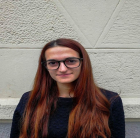Hashtag d’ordine #recovery: Instagram e i disturbi del comportamento alimentare.
Turner, J. C., Hogg, M., Oakes, P., Reicher, S., & Wetherell, M. (1987). Rediscovering the social group: A self-categorization theory. Oxford, England: Basil Blackwell.
Turner, J. C., Hogg, M., Oakes, P., Reicher, S., & Wetherell, M. (1987). Rediscovering the social group: A self-categorization theory. Oxford, England: Basil Blackwell.
Turner, J. C., Hogg, M., Oakes, P., Reicher, S., & Wetherell, M. (1987). Rediscovering the social group: A self-categorization theory. Oxford, England: Basil Blackwell.
Van den Berg, P., Thompson, J. K., Obremski-Brandon, K., & Coovert, M. (2002). The tripartite influence model of body image and eating disturbance: A covariance structure modeling investigation testing the mediational role of appearance comparison. Journal of Psychosomatic Research, 53(5), 1007-1020.
Vandenbosch, L., & Eggermont, S. (2012). Understanding sexual objectification: A comprehensive approach toward media exposure and girls' internalization of beauty ideals, self-objectification, and body surveillance. Journal of Communication, 62(5), 869-887.
Williams, C., & Riley, S. (2013). Finding support and negotiating identity. An analysis of the structure and content of newbie posts and their elicited replies on five pro-eating disorder websites. RESET, 2, 1–15.
Autore/i dell'articolo
Parole chiave dell'articolo
Newsletter
Keep me updated about new In-Mind articles, blog entries and more.


